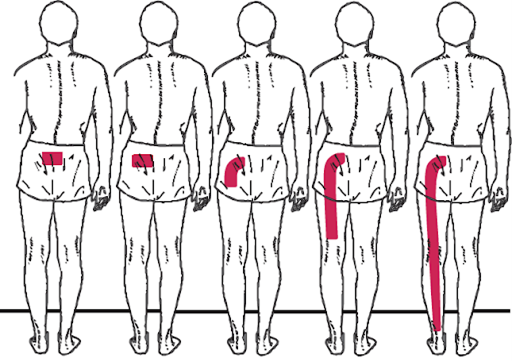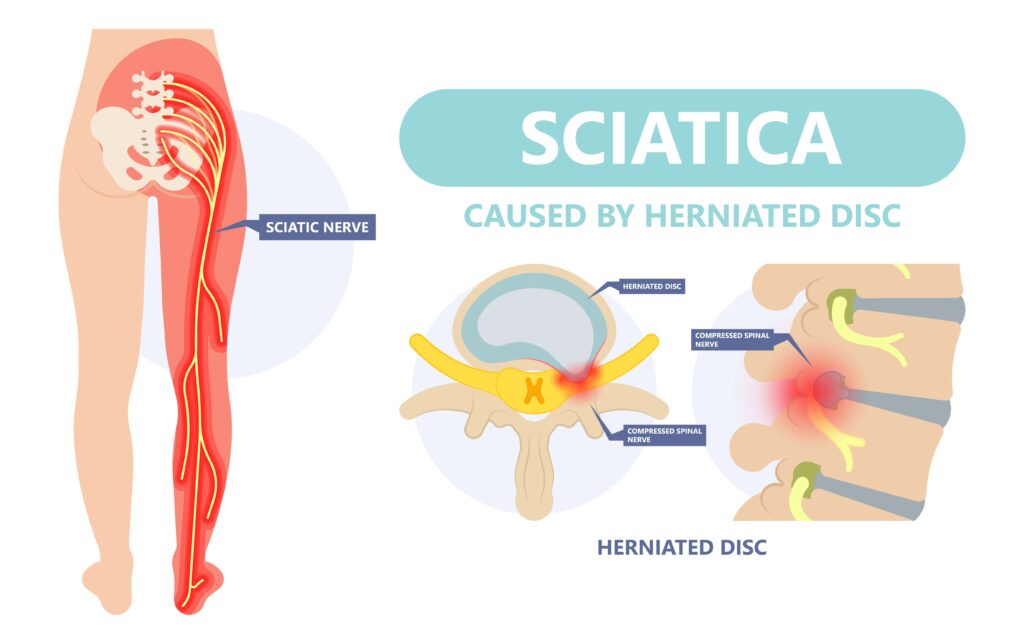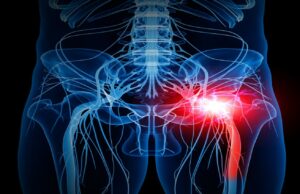Sciatica
Sciatica is an inflammation of the sciatic nerve, which runs from the back to the leg. The sciatic nerve supplies the muscles of the back of the thigh (hamstrings), lower leg, ankle, and foot. It also supplies sensation to the skin of the back of the thigh, outer leg, and bottom and inner portions of the foot. This nerve can become inflamed for many different reasons.
Common signs and symptoms
- Pain in the back of the thigh, usually traveling below the knee; may be worse with bending, sneezing, coughing, straining, or prolonged sitting
- Numbness or weakness affecting the thigh, lower leg, ankle, or foot
- Occasionally, pain in the back or buttocks

Causes
Sciatica is caused by inflammation of the sciatic nerve as a result of irritation from a variety of sources, which include:
- Trauma
- A ruptured disk
- Arthritic spurs of the spine
- Spondylolisthesis (slippage of the vertebrae)
- Pressure from muscles of the pelvis (hamstring, piriformis)
- Prolonged sitting on a wallet

Expected outcome
Sciatica is usually curable within 6 weeks with appropriate conservative treatment; however, some patients need surgery.
Possible complications
- Permanent numbness, weakness, or paralysis
- Muscle wasting
- Chronic back pain
- Risks of surgery, including infection, bleeding, injury to nerves (persistent or increased numbness, weakness, or paralysis), persistent back and leg pain, and headache
Factors that increase risk
- Any sport that causes downward or twisting pressure on the spine, most commonly football, weight lifting, equestrian sports, bowling, tennis, jogging, track, racquetball, or gymnastics
- Poor physical conditioning (strength, flexibility)
- Inadequate warm-up before practice or play
- Family history of low back pain or disk disorders
- Previous back surgery, especially fusion
- Preexisting spondylolisthesis
- Poor mechanics with lifting
- Prolonged sitting, especially with poor mechanics
Preventive measures
- Use proper posture when sitting and proper technique when lifting.
- Appropriately warm up and stretch before practice and competition.
- Maintain appropriate conditioning that includes back and hamstring flexibility, muscle strength and endurance, and cardiovascular fitness.
- Maintain an ideal body weight.
- If your back has ever been injured, avoid any vigorous physical activity that requires twisting of the body under uncontrollable conditions.

